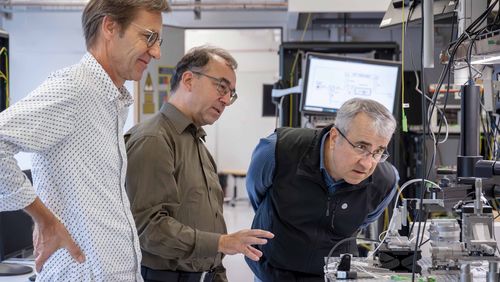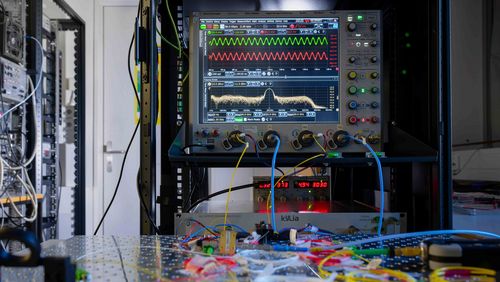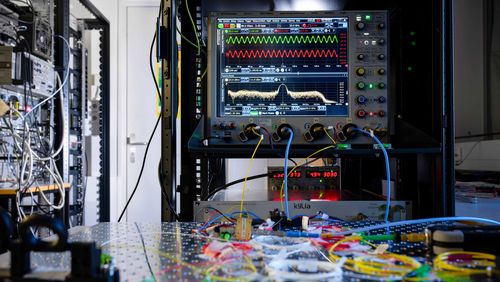
Single-atom switch
Today’s microchips are already small. But those of the future will be 100 times smaller still – and 10,000 times more energy efficient. Creating this mighty microchip is the ambitious aim of researchers at the Center for Single Atom Electronics and Photonics at ETH Zurich and the Karlsruhe Institute of Technology.
From espresso machines to huge mainframe computers, microchips are in almost every electronic device we use. In recent years, researchers have succeeded in making microchips smaller and faster, but the push to get even more miniscule has now hit a wall. That’s why the team at the Center for Single Atom Electronics and Photonics are experimenting on a completely novel microchip – one that functions at the atomic level.
While transistors may seem rather nondescript from the outside, they’re actually powerful electronic components that control, switch or amplify electric currents – and there are billions of these tiny semiconductor “building blocks” on every microchip. In short, transistors are what enable our digital devices to do the actual computing work. But all technological advances notwithstanding – there’s a problem. Transistors consume massive amounts of energy when they process information: data communications and processing account for more than ten percent of overall electricity consumption in industrialised nations.
Researchers in the groups led by Jürg Leuthold and Mathieu Luisier at ETH Zurich and Thomas Schimmel at the Karlsruhe Institute of Technology are seeking to solve this problem by developing a mind-bogglingly efficient single-atom transistor that will significantly reduce energy consumption in computers. Their approach is unique: instead of functioning on the basis of electrons, the microchip of the future will work at the single-atom level or via ions.
The project, which the Werner Siemens Foundation has been financing since 2017, is well on track. In lab tests, the single-atom switch already uses ten thousand times less energy than today’s silicon semiconductor technology. Part of the success is due to the researchers’ decision to use tin as a novel component for the electrodes. The next step is to transfer the innovative invention into practical application. To do so, the biggest question is how single-atom transistors can be switched simultaneously on a large scale.
Facts and figures
Project
Researchers at ETH Zurich and the Karlsruhe Institute of Technology are exploring a fundamentally new type of microchip that works with single-atom switches.
Support
The Werner Siemens Foundation has made a donation to the ETH Zurich Foundation to finance the establishment of the Centre of Atomic Scale Technologies.
Funding from the Werner Siemens Foundation
12 million Swiss francs
Project duration
2017–2025
Project leader
Prof. Dr Jürg Leuthold, head of the Institute of Electromagnetic Fields at ETH Zurich
Partners (selction)
Prof. Dr Thomas Schimmel,
Institute of Applied Physics,
Karlsruhe Institute of Technology (KIT)
Prof. Dr Mathieu Luisier,
Integrated Systems Laboratory,
ETH Zurich










